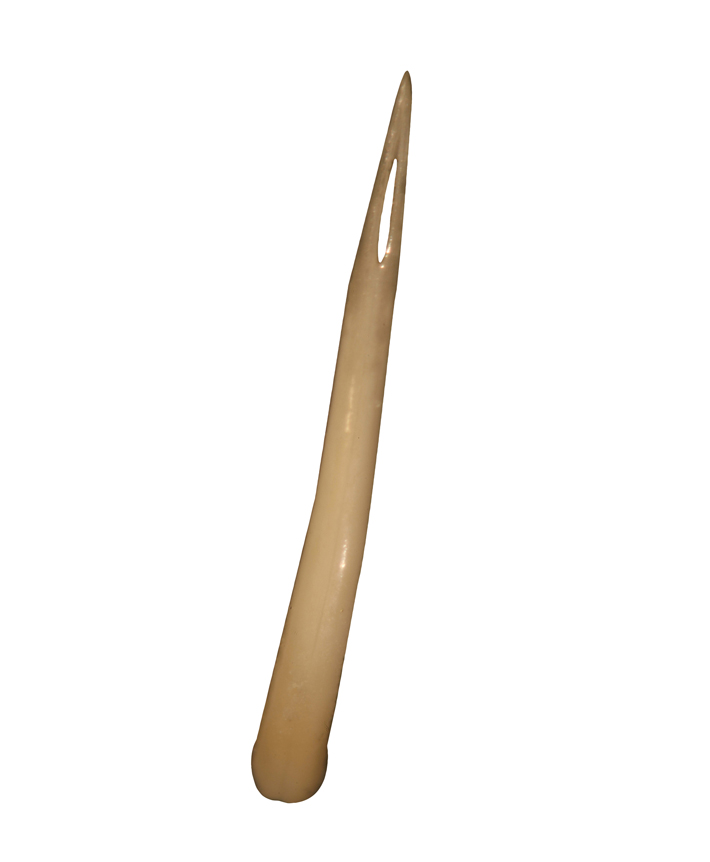Snake Snack
July/August 2019
 Some 1,500 years ago, a hunter-gatherer in the canyon lands of the Lower Pecos region of southwest Texas made the unfathomable decision to gulp down a whole snake, fangs and all. Texas A&M University archaeologist Elanor Sonderman discovered evidence for this queasy-making culinary event while studying a human coprolite, or desiccated feces, that was excavated in the 1960s at the site of Conejo Shelter. While examining the coprolite, which contained the expected plant remains, Sonderman found a fang, as well as scales and bones, belonging to a venomous snake—either a copperhead or a rattlesnake.
Some 1,500 years ago, a hunter-gatherer in the canyon lands of the Lower Pecos region of southwest Texas made the unfathomable decision to gulp down a whole snake, fangs and all. Texas A&M University archaeologist Elanor Sonderman discovered evidence for this queasy-making culinary event while studying a human coprolite, or desiccated feces, that was excavated in the 1960s at the site of Conejo Shelter. While examining the coprolite, which contained the expected plant remains, Sonderman found a fang, as well as scales and bones, belonging to a venomous snake—either a copperhead or a rattlesnake.
 Other coprolites from the area show that people did, occasionally, eat snakes at the time, but only after dressing and cooking them. The bones in this case showed no signs that the reptile had been prepped. Rather, the adventurous gourmand probably ingested the creature without first defanging or descaling it. “It’s possible someone was curious and looked at a snake and said, ‘I will put that in my mouth,’” says Sonderman, “but it’s not likely.” She points out that serpentine figures are often depicted in rock art of the Lower Pecos, suggesting that snakes were important symbolically. It’s possible that consumption of the snake was an element of a ritual, likely undertaken by someone with an uncommonly strong stomach.
Other coprolites from the area show that people did, occasionally, eat snakes at the time, but only after dressing and cooking them. The bones in this case showed no signs that the reptile had been prepped. Rather, the adventurous gourmand probably ingested the creature without first defanging or descaling it. “It’s possible someone was curious and looked at a snake and said, ‘I will put that in my mouth,’” says Sonderman, “but it’s not likely.” She points out that serpentine figures are often depicted in rock art of the Lower Pecos, suggesting that snakes were important symbolically. It’s possible that consumption of the snake was an element of a ritual, likely undertaken by someone with an uncommonly strong stomach.